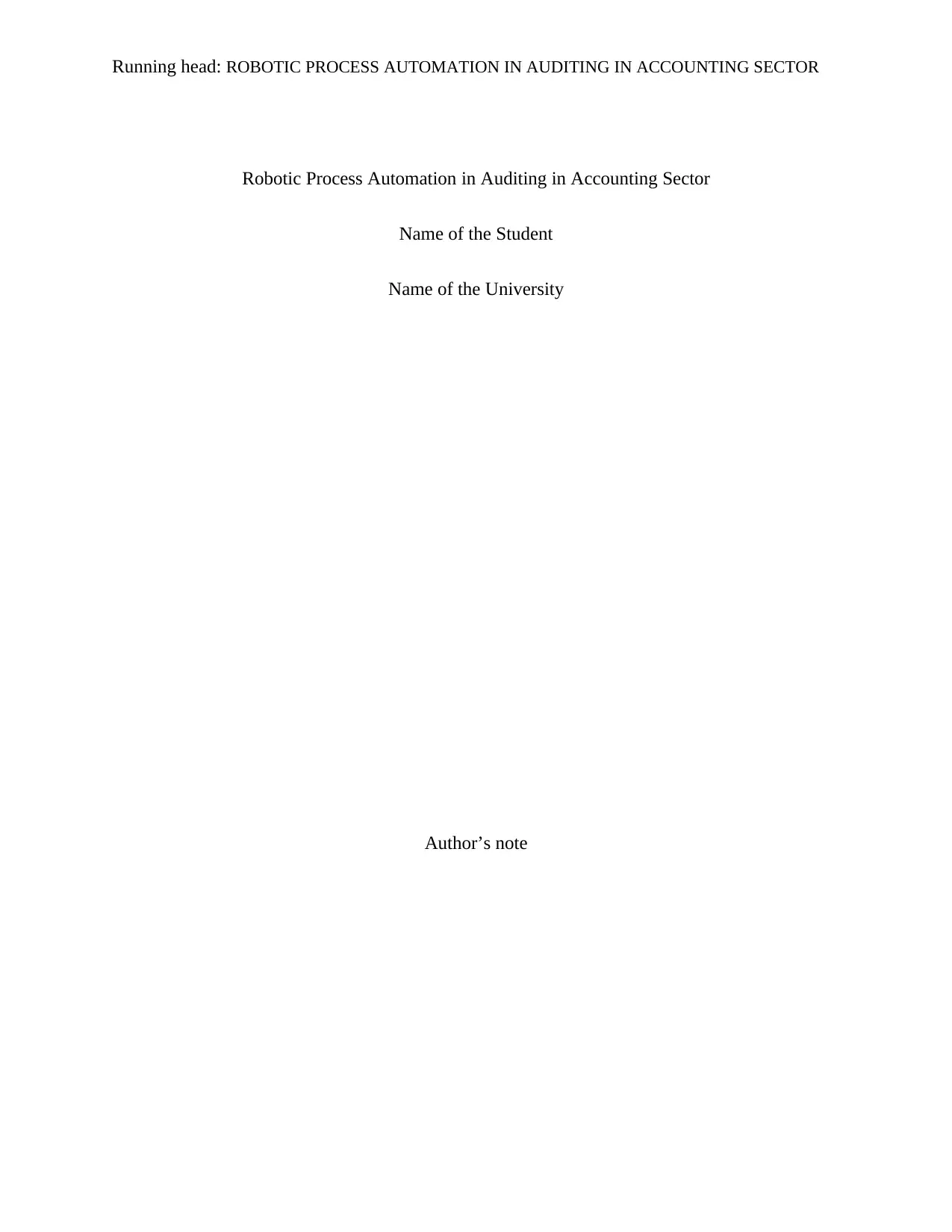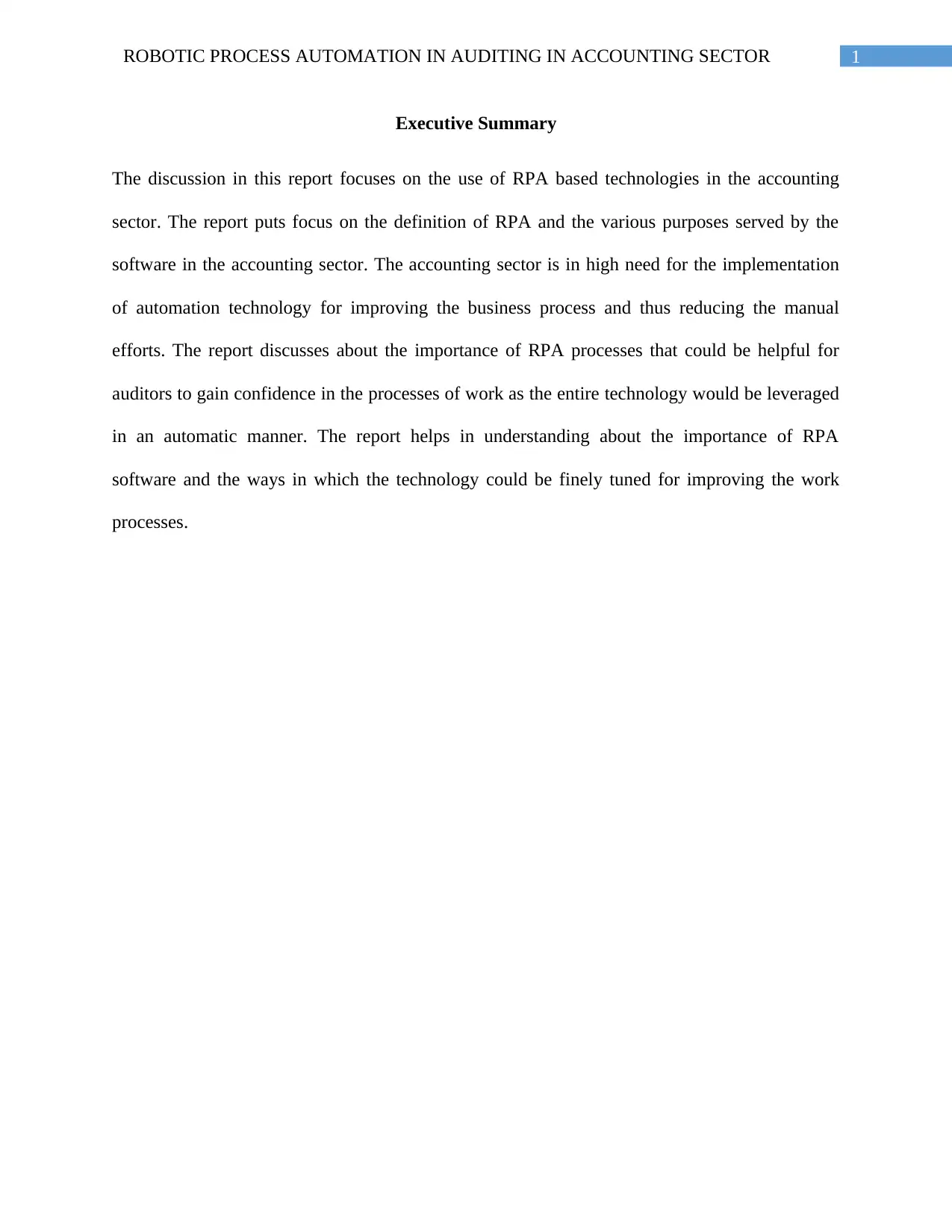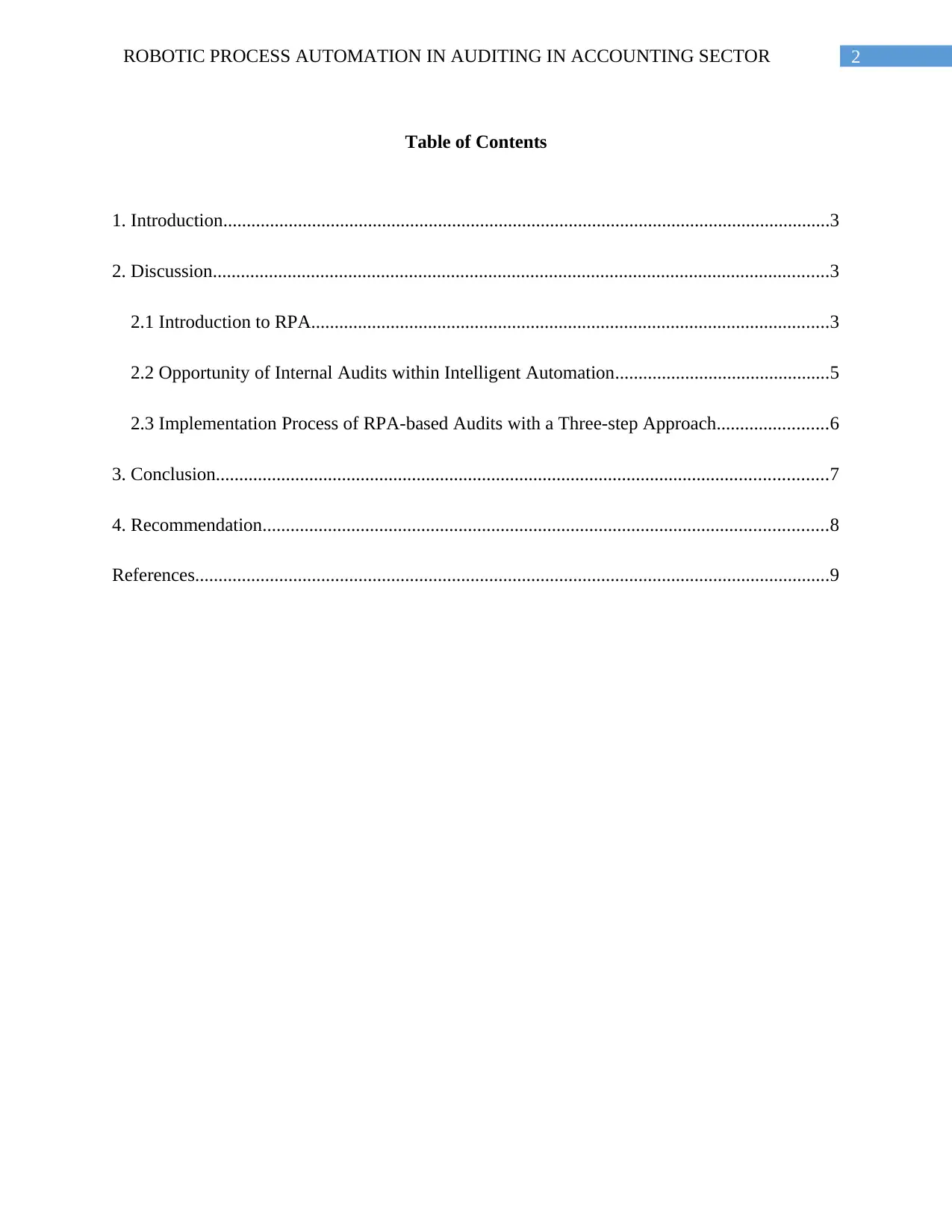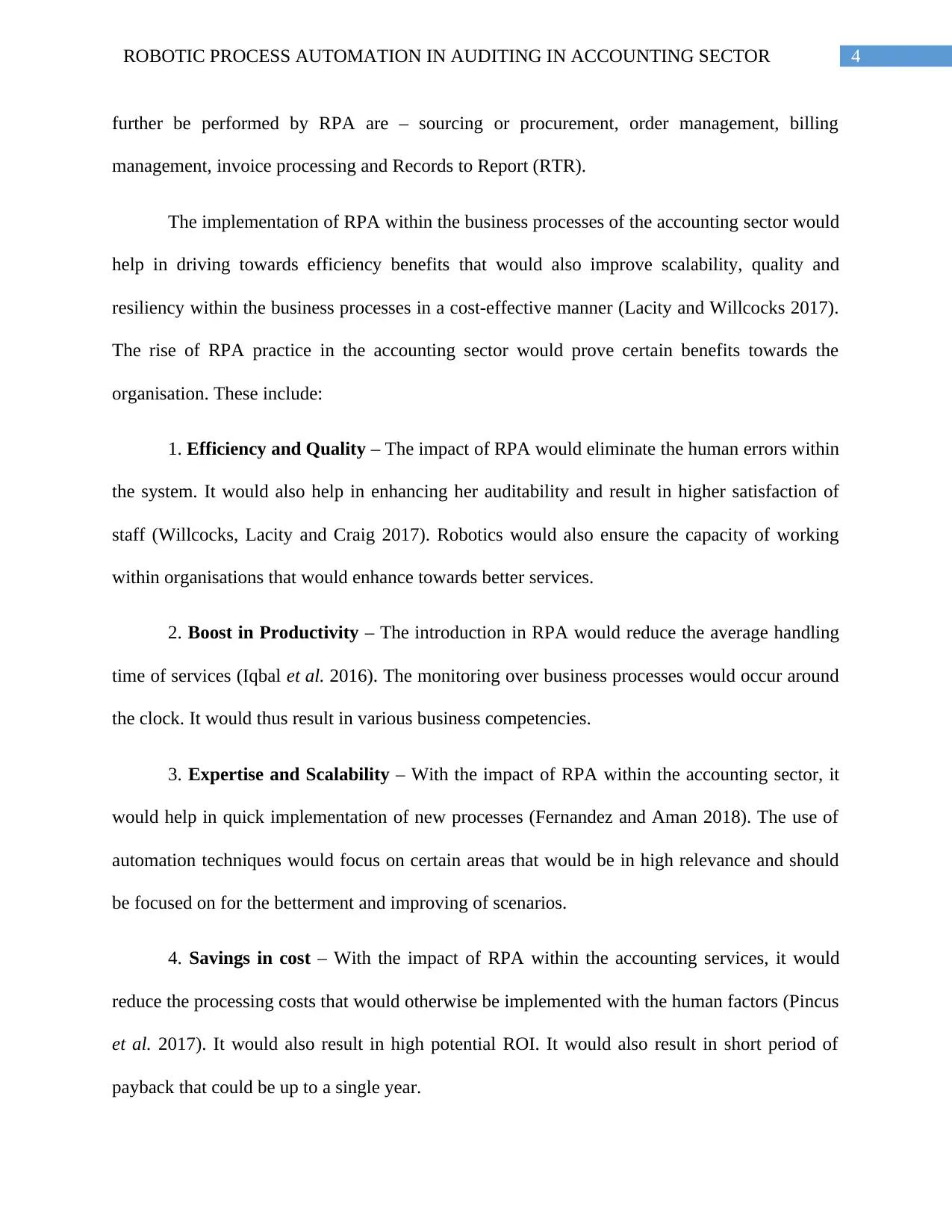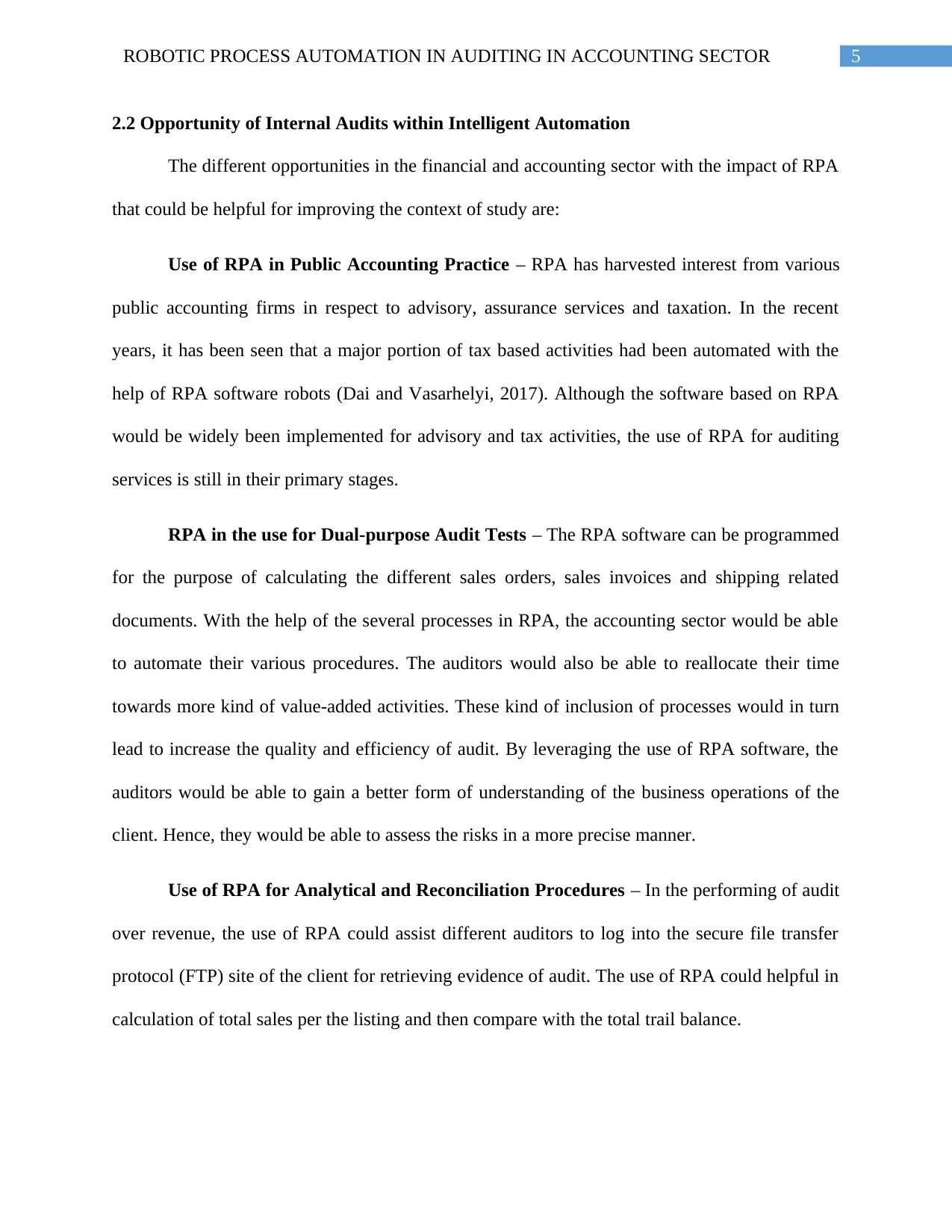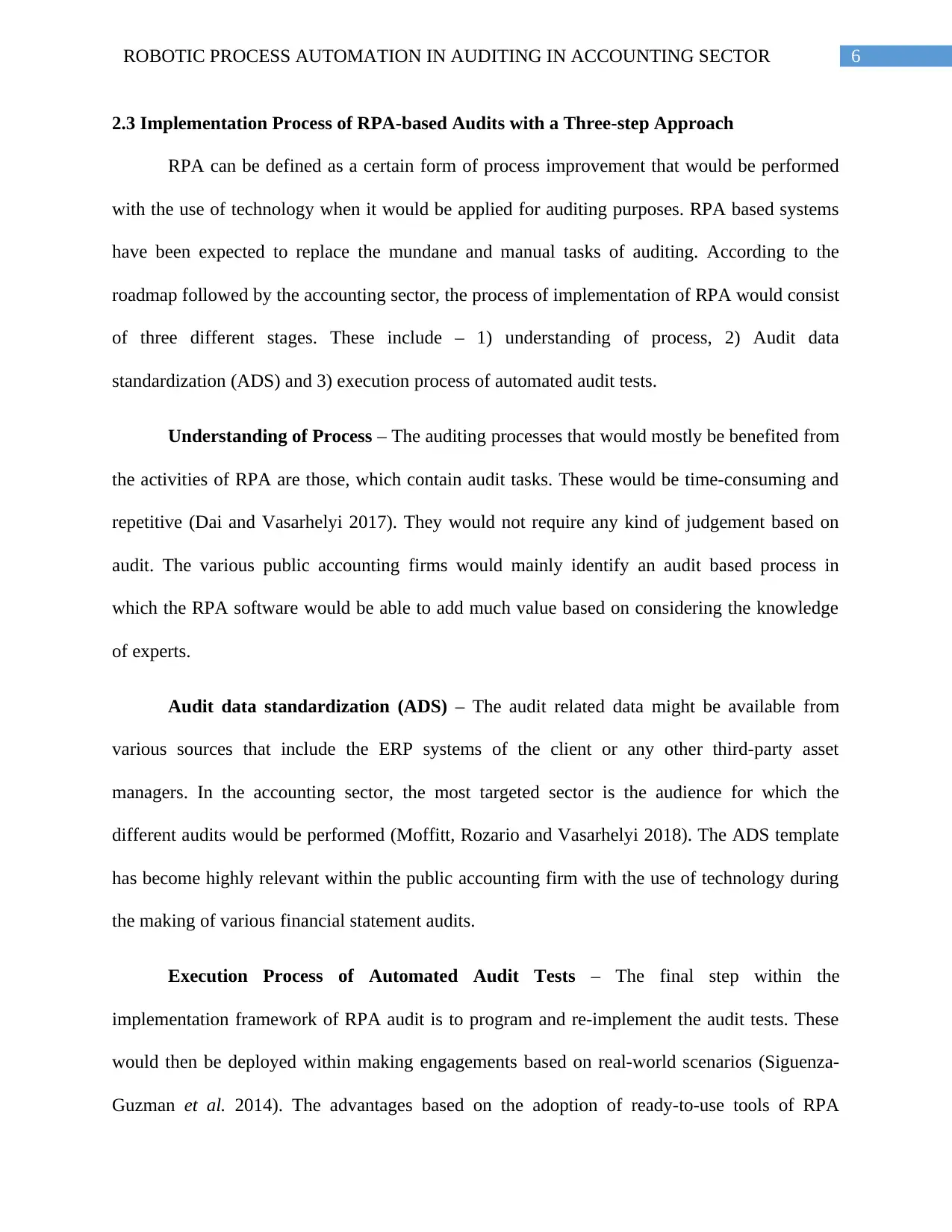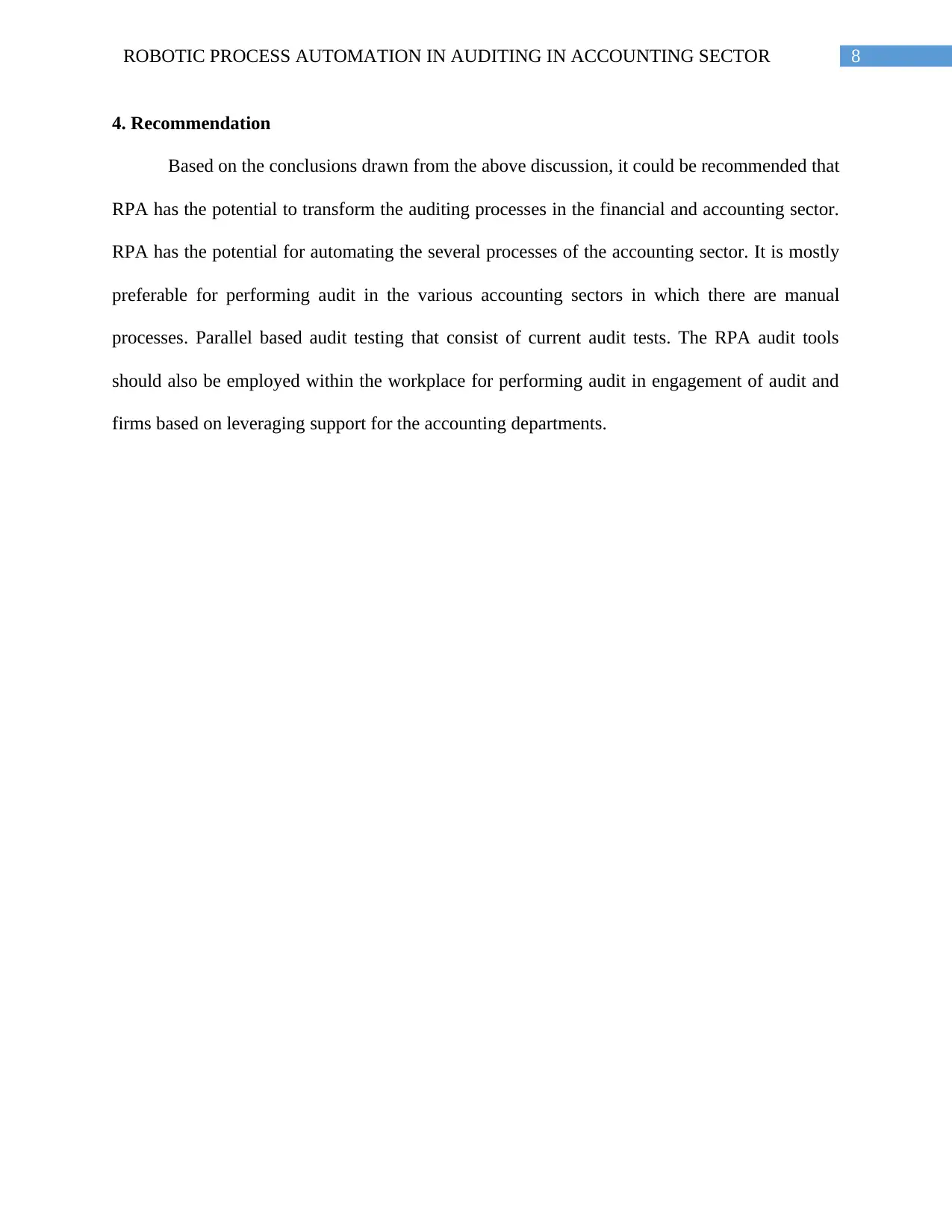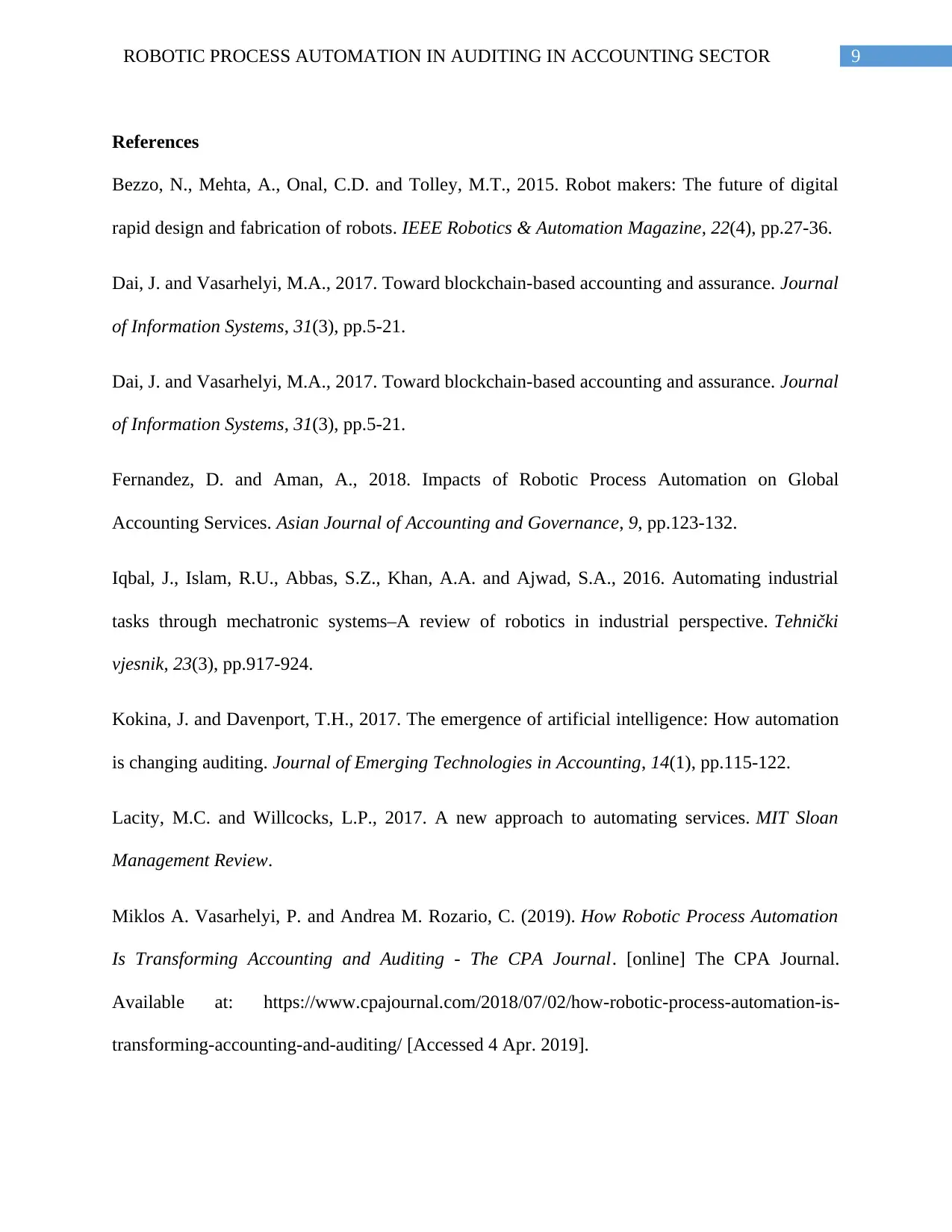Robotic Process Automation in Auditing in Accounting Sector
VerifiedAI Summary
The discussion in this report focuses on the use of RPA based technologies in the accounting sector. The report puts focus on the definition of RPA and the various purposes served by the software in the accounting sector. The accounting sector is in high need for the implementation of automation technology for improving the business process and thus reducing the manual efforts. The report discusses about the importance of RPA processes that could be helpful for auditors to gain confidence in the processes of work as the entire technology would be leveraged in an automatic manner. The report helps in understanding about the importance of RPA software and the ways in which the technology could be finely tuned for improving the work processes.
![[object Object]](/_next/static/media/star-bottom.7253800d.svg)
![[object Object]](/_next/static/media/star-bottom.7253800d.svg)
